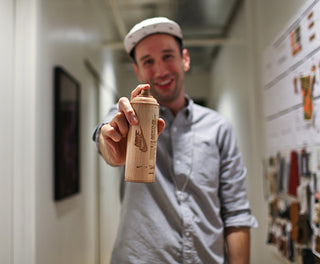Along with its homegrown spirit of keeping things local and highlighting the many natural resources it has to offer, one of the most distinct draws from my time up North was just how much talent Portland has been cultivating over the years with the plethora of transplants who have made their own nest in the city and aren’t really racing to fly back to the metropolitan lifestyle. Amongst those is Antonio Brasko, a designer who’s called Portland home for almost a decade. A Florida native, Brasko booked a one-way ticket across the country in the mid-2000s, seeking “something else” than what the Sunshine State had to offer creatively.
Making use of his understanding of Adobe from its early days, Antonio landed a position within the software company’s PDX office through a mysterious ad, which eventually blossomed into a full-fledged career in design and graphics for the likes of Nike, adidas, and Disney, amongst others. Having followed each other’s work for some time, I made sure my last stop on the tour was to Brasko’s design studio for a friendly chat about his work, perspective on design and how he managed to make a comfortable living as a freelancer doing things his way.
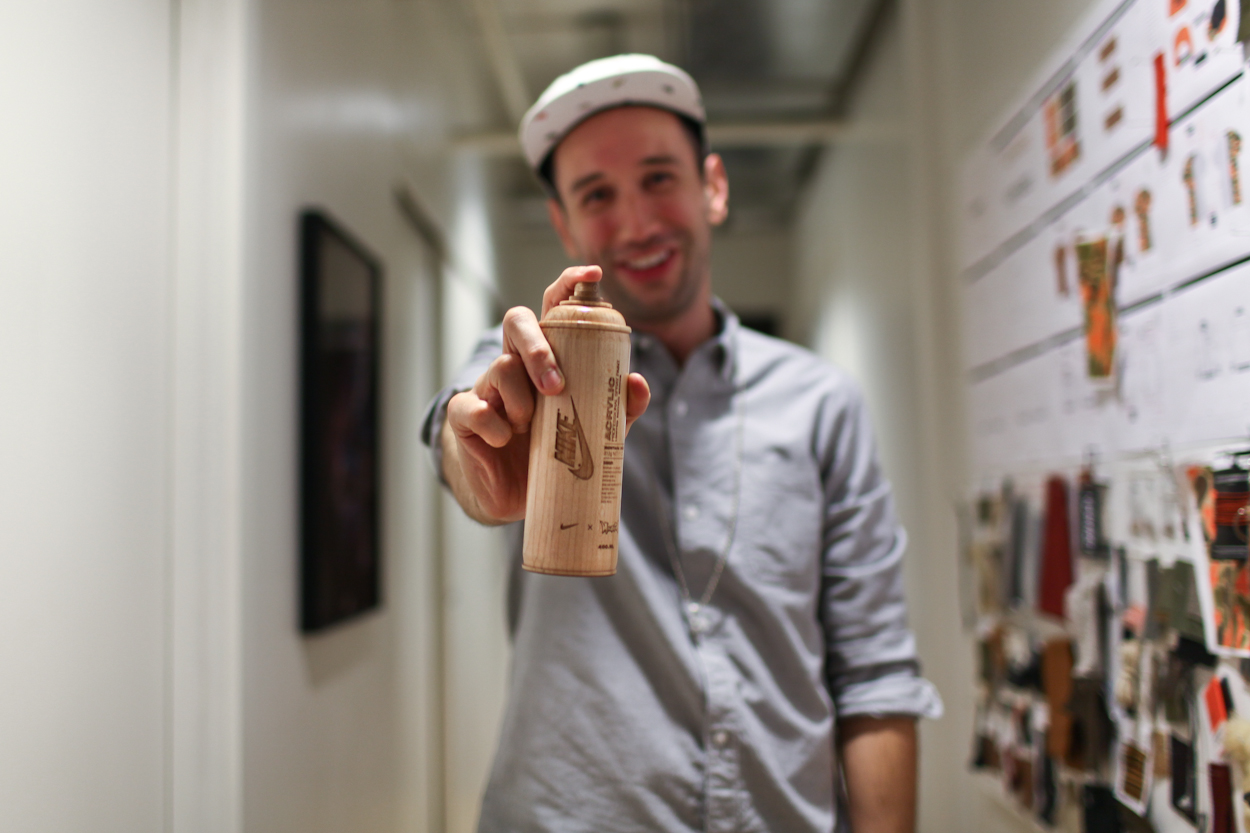
Portland-based designer Antonio Brasko
LUIS RUANO: Why Portland?
I just wanted to immerse myself in these brands. I knew what I wanted to do and I knew that working from Florida, you can only do so much. So I sold everything and just bought a one-way ticket and bounced. I hadn’t even visited [Portland] prior to that.
I studied music way back but I realized about halfway through that design was my thing. I was doing a lot of freelance work for friends, bands, posters, and just small things like that [in Florida]. From there, it just started growing and at the same time when I started getting out of music, I began getting into the arts. So I started studying that and got a minor in photography. I did a show when I was 18 or 19 and that’s when it really started solidifying the “this is what I should be doing.”
I took those skill sets, came out here [Portland], and sort of just kamikaze styled it. But after a few months I found an ad – I was looking for a place to work – it said their biggest concern was knowing Photoshop and Illustrator. I thought in my head, “Done.” I’ve been using Photoshop back home since forever.
This was in 2006. So I went in and took the test and everything and nailed it and it turned out that that was Adobe. They were really secretive about it at first, but they had – just near Nike – a location and they were hiring for that location. I ended up working there for about a year and a half or so. Then Nike had a big lay off and then Adobe did too. I don’t know if you remember that, but they laid off over 500 people.

At that point I just decided I was going to do my own thing. This was a good intro to the city and it gave me some cash flow and the whole 9. So I started freelancing a little bit. At the time, I knew this agency nearby, a really small one that had been around in graphic design and a little bit of web. And one of the owners, her sister, was the VP of brand at Doc Martens. So one day I happened to be walking by and they were on the street corner and I ran into her and she says, “I want you to meet my sister.”
So we connected – they were in a hurry for lunch and it was just like, “Oh, here’s my card, nice meeting you.” Just really quick, I followed up and then months later she hits me up out of the blue and she’s like, “ Hey, we’ve got this project that we think you’d be really good for.” Then that stemmed into more projects and then eventually that 2010 campaign [by Dr. Martens]. By that point, once I had started wrapping that up – it was a pretty big campaign – adidas hit me up and through some friends I networked with Nike and it started snowballing from there. It’s been a pretty crazy ride.
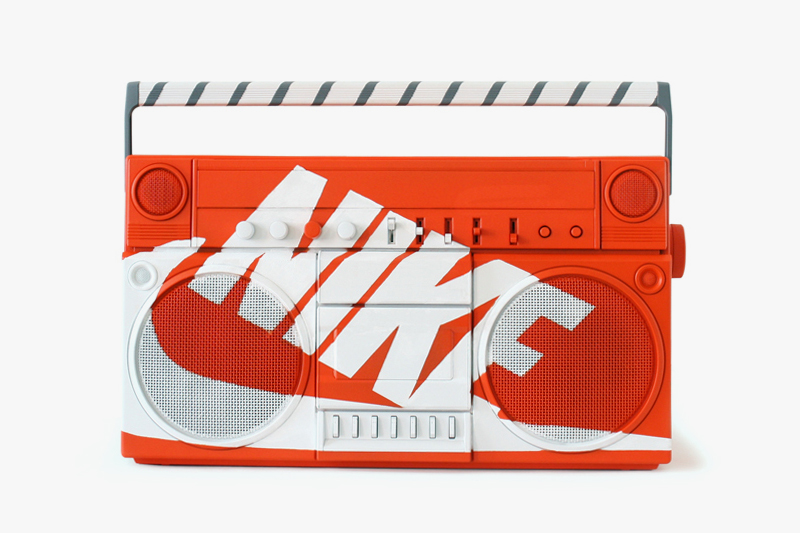
Custom Nike Boombox for Compound Gallery Art Show
Freelance can be tough.
I think what really prepared me was understanding what Nike wants. Because I think that’s the most important, they have a certain aesthetic, a certain brand, a voice obviously, and things like that. In this city, I know it’s different elsewhere, but design agencies and freelancers kind of all have this North West aesthetic. So I think that shoots photo a little bit because it’s rad but at the same time everyone is doing it so it’s easy to find.
What I sort of offer, like the Boombox or other things I’ve done, is a little bit different and outside. I didn’t just illustrate a boombox, I created product they could shoot and use. I think that kind of brings a little bit of that edge that some brands tend to look for. Some are more conservative – Intel, they would never do something to that extreme. So understanding that brand is different, but for Nike they kind of want that edge and I think that as a combination of them recognizing that and me understanding what they wanted I can deliver.
Then I can take a step back and go, “Okay, I know what you guys want, I’ve built those relationships, you’ve seen my work, we have an understanding.” That allowed me to not be attached to the keyboard. I think that’s a tough thing too, especially for a lot of creatives, a lot of the brands like that don’t understand that the creative needs to get out, you know?
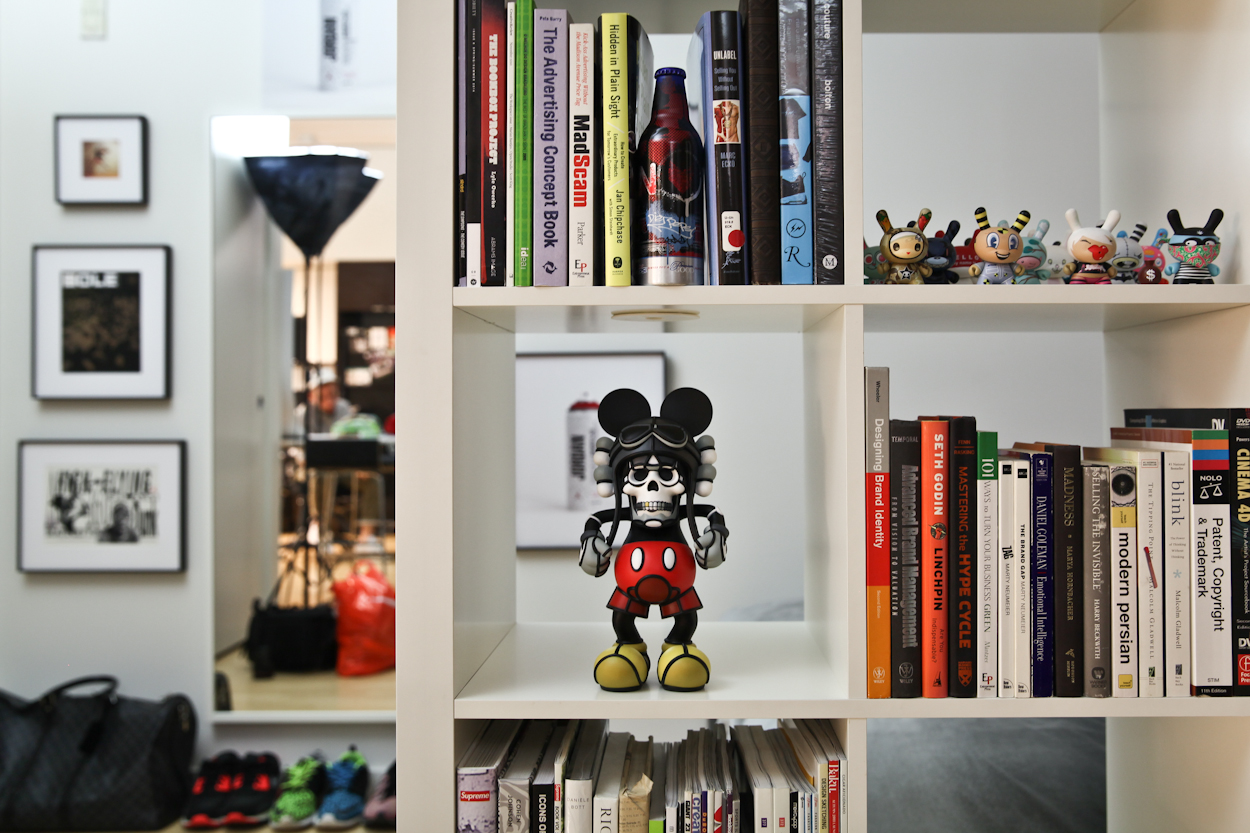
What about edge when it comes to photography?
There’s almost a formula now for being a pseudo-photographer. [Laughs] Guys can go out and just drop a few grand on a really nice camera, call themselves a photographer and then ask a bunch of girls – randomly or on Instagram or wherever they can find them – “Let me book you for a test shoot, wear this streetwear tee or hat.” Then they catch the likes that way and they build.
I don’t think you can go back once someone’s had a taste of that. If a kid is getting all that recognition for some stupid pictures, he’s not going to want to go back, that’s all he knows. Those are the kids that are making the popular page on Instagram because they shot the girl that’s half-naked and wearing the Supreme hat. The people liking it wanted the hat and they probably couldn’t get it so they’re liking it anyways. It’s da fame. [Laughs]

What’s your take on brand building?
What I’ve noticed with a lot of guys is they’ll say, “Hey, we want to start our own brand.” It could be like five friends – they don’t even have to be friends – but they pull together and they drop in whatever it takes to get a bunch of blanks. Then they grab about 100 pieces each and put their logo on them. You don’t have a brand at that point. For one, you’re using somebody else’s template, and you just hired someone to embroider a logo on there that you probably whipped up in ten minutes.
I think that’s the problem, people don’t understand [the process of] building a brand with longevity. It took me awhile to start Norwood because I didn’t want to go to the same hat manufacturers. I wanted to get the fit and patterns right. Even with clothing, I want to go into outerwear with it, but at the same time I don’t want to just grab any hoodie and stitch a logo on there. That’s dumb to me – you’re not bringing anything to the table, you’re just adding noise at that point.
So with that said, I’ve been working on having those unique patterns and the right fits and fabrics. It’s important for your personal brand, for a clothing brand – you look at the top brands, Nike, Apple. They’re the ones that took risks and pushed limits.
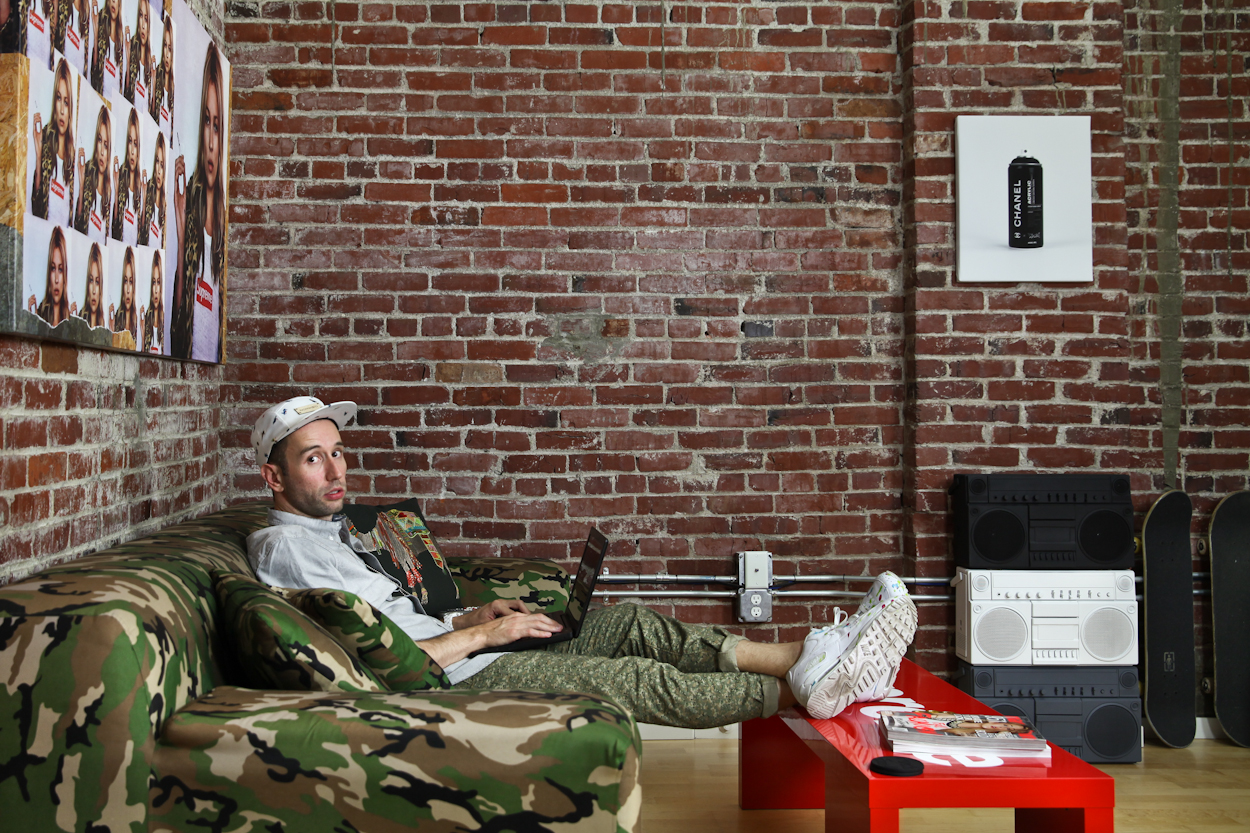
If you’re going to copy something, enhance it in some way; refine it. A lot of people don’t though. This day and age, I feel like people download a filter pack and get the Adobe cloud and learn some basic tutorials, and then they call themselves designers and start a streetwear brand. Next thing you know they’re like, “What do I do?” After that first collection because they weren’t thinking longevity, they were thinking, “This is hot. This other kid got a lot of likes for the same graphic.”
I run a brand called Norwood that I started a while back just to have my own creative freedom and no corporate rule and all that stuff. It’s been pretty successful since it’s just me so it’s a small operation. It’s kind of influenced by the North West and that whole aesthetic, but trying to bring more of a modern city street element to it. Because Portland kinda has – I’m sure you noticed – some of that more rugged end of menswear, they’re not really into street. Most of what you see up there is the Fall ’14 line actually. So lots of custom pan-tone color prints, orange Cordura – they’re waterproof on the back for the Portland whether because it’s really rainy and damp here. Just playing around with different stuff. I took it to Agenda last August and it was really well-received, lots of commercial or international accounts opened. So it’s been pretty good so far.
Your spray cans are quite interesting.
It started off as more of a branding and color experiment than anything. With just a few cans I grew it out through that. But the whole idea was to mesh fashion, graffiti, street, art – that whole culture together in a new way. A lot of the brands have embraced graffiti at one point or another, whether it’s on a hand bag or brands like Stussy, obviously their signature is graffiti. So I think that they can all kind of relate in a way.
So that’s where it stands and it grew from five brands to – I think now there’s like, 30 different brands (see HERE). There’s still more in the works. I just finished doing a set for HUF, that after [Keith Hufnagel] saw it at the LA show he was really stoked and he actually sent Scott, his creative director, there because he couldn’t make it. He sent him to check out the show and they were just stoked. He just purchased two of those so I’m kind of stoked to see what he’s going to do with it, because I know he likes to do those pop-ups.
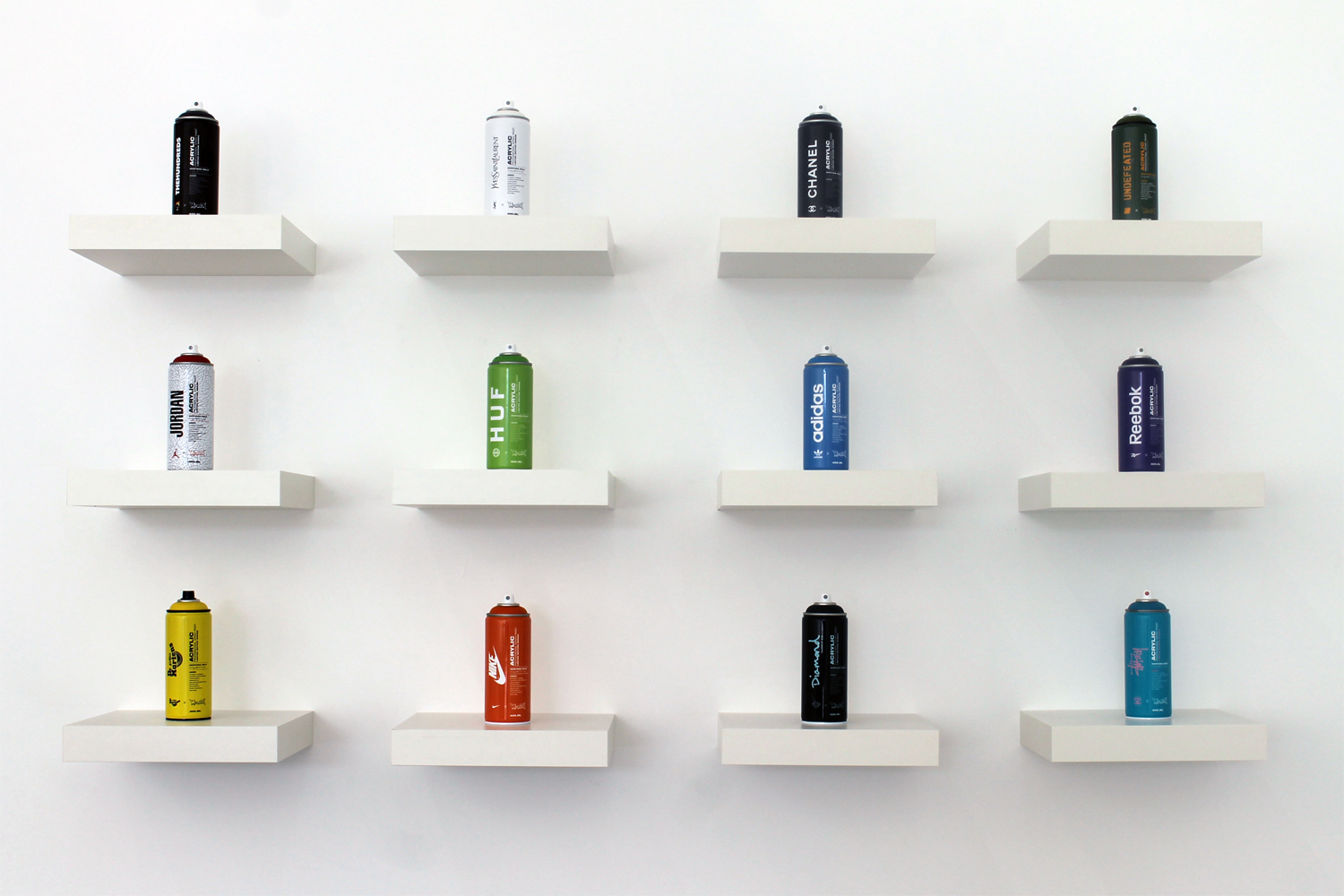
Trends.
I think part of being a good designer – any designer – is understanding them, because you do need to know what’s happening or what’s current. Going back to what you said, I do a lot of the skimming, because you just want to get the gist of what’s hot and trending. But at the same time I think it’s understanding and taking notes, not literal, but mental. Then using what you know from that to do something that’s different. A lot of brands, especially streetwear – they look at each other. They’re all going to the same manufacturers, all going to the same screen printer that’s doing a two color hit on the front of their shirt, same cut, everything.
So when you can step outside of that – that’s sort of with Norwood, that’s the outlook for me. I didn’t want to go to your typical manufacturer and get your Supreme fit hat with the same logo placement and everything. Instead, I sourced everything independently and curated the pieces together with special fabrics – even the wood labels on the front, those come out of New York. The leather straps are hand cut here in the U.S. So having that difference –understanding that culture and what’s hot allows you to have that difference. So then you can have that piece that’s going to stand out versus just looking at what’s on Hypebeast’s front page and copying that. That’s what most guys do.
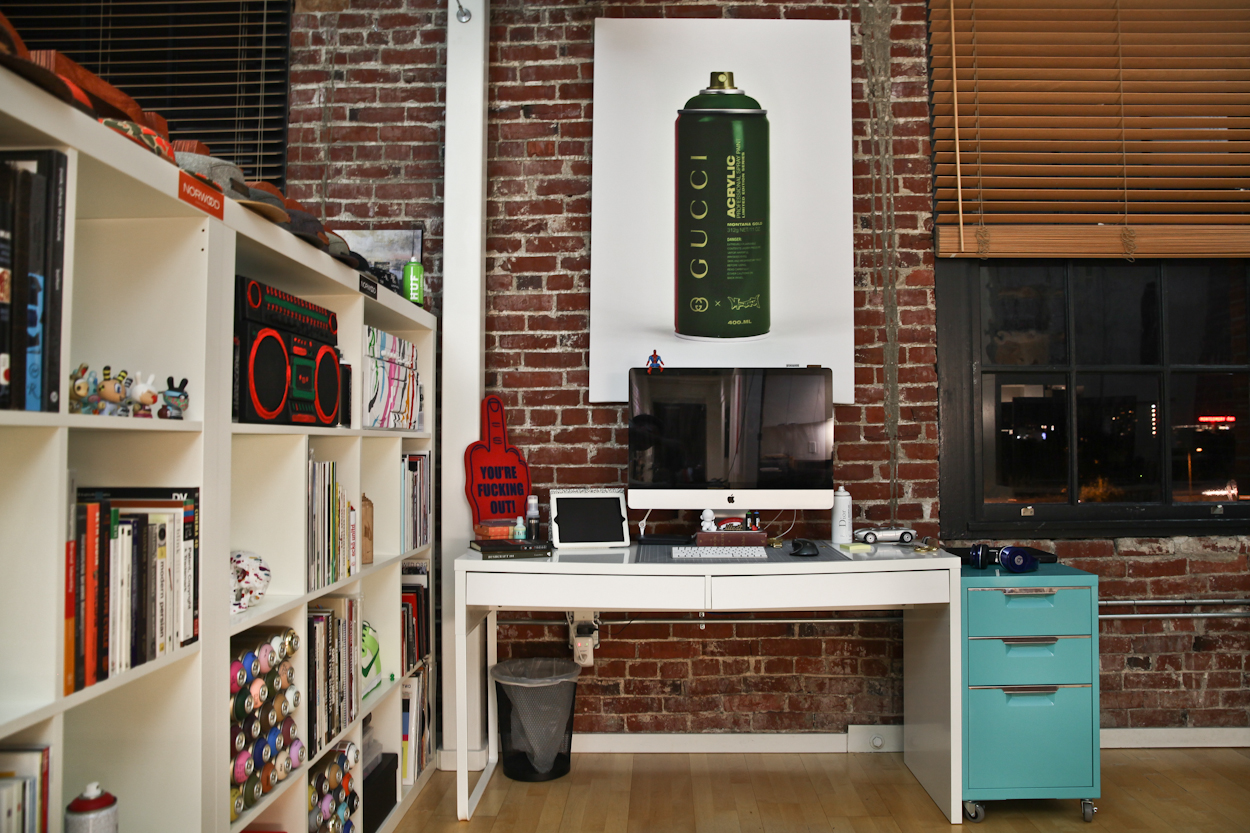
::
Follow Antonio Brasko on Instagram (HERE) and his brand Nordwood (HERE). More work can also be viewed on AntonioBrasko.com.

